Our Tajikistan trip was part of a 17 day Central Asia trip that covered Uzbekistan, Tajikistan, Kazakhstan and Kyrgyzstan. As a country, Tajikistan was a part of the USSR until 1991 when the USSR collapsed. The country achieved independence from the Soviet Union in 1991 and became a sovereign country with pretty much the same borders when it was a part of USSR. Dushanbe was a small town that became the capital. Tajikistan is pretty underdeveloped compared to countries like Kazakhstan. We spent 3 days in Tajikistan. This blog covers the details of the trip and is best viewed on a laptop or a desktop.
We traveled from Samarkand to Iskanderkul Lake through Fann Mountains (Pamir Range) to Dushanbe by hired car. We flew out from Dushabe to Almaty, Kazakhstan.
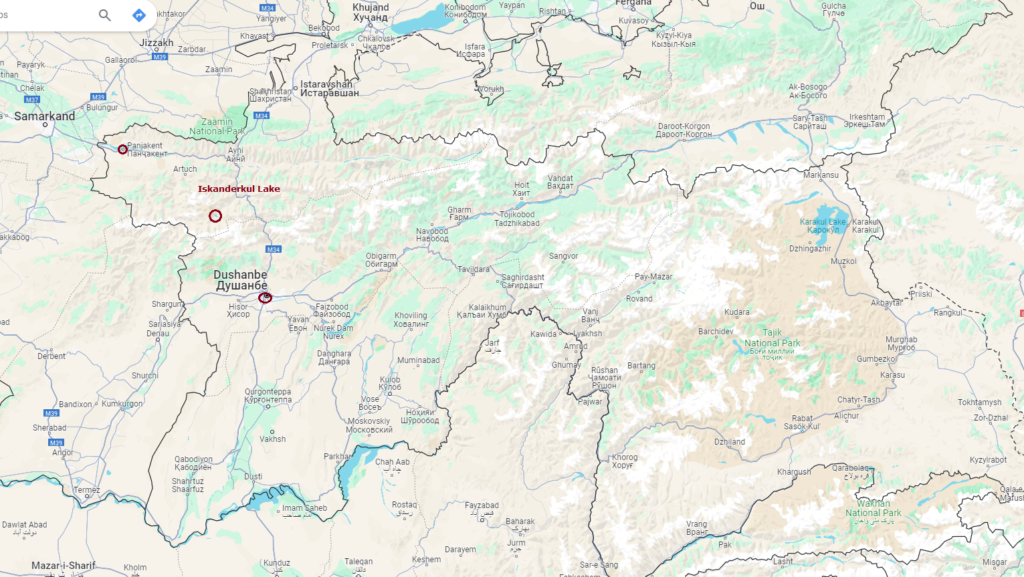
Day 1: Wed, May 22, 2024: Penjakent Border Crossing, Fann Mountains
Samarkand, Uzbekistan to Dushanbe, Tajikistan is only 295 km. We decided to do a land border crossing instead of taking a flight which was more cumbersome. Moreover, we would be passing through Fann Mountains and Iskanderkul, for which people often do a special day trip from Dushanbe. So it made sense to take the road option.
We left Hanifa Boutique hotel in Samarkand at 8.30 am and headed to the border crossing. The hotel had arranged for transport. We reached the border at around 9.30 am. The road condition got a little worse as we got closer to the border.
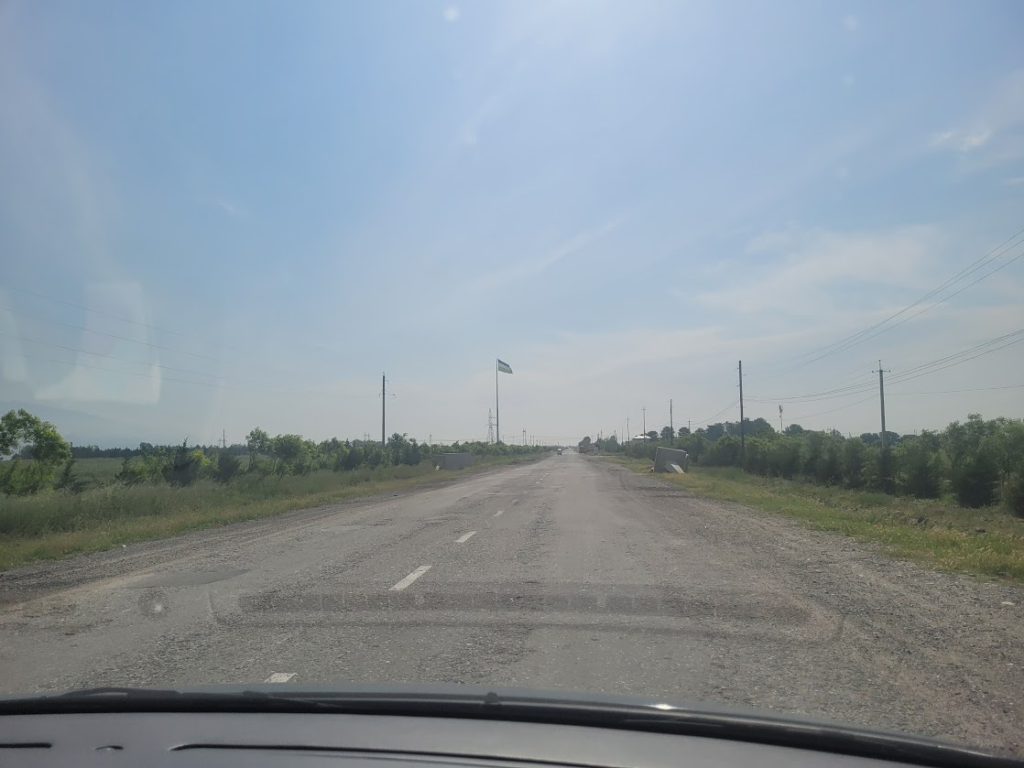

We cleared immigration on the Uzbek side of the border and walked over to the Tajik side of the border. The immigration on the Tajik side of the border was also very straightforward.


We had a car waiting for us on the Tajik side (town of Penjakent). The cost was $40 per person to drive us from Penjakent to Dushanbe via sightseeing Iskanderkul lake. We exchanged dollars for Tajik somoni (1 USD = approx 10 Tajik somoni). We were on our way to Dushanbe at around 10.45 am.
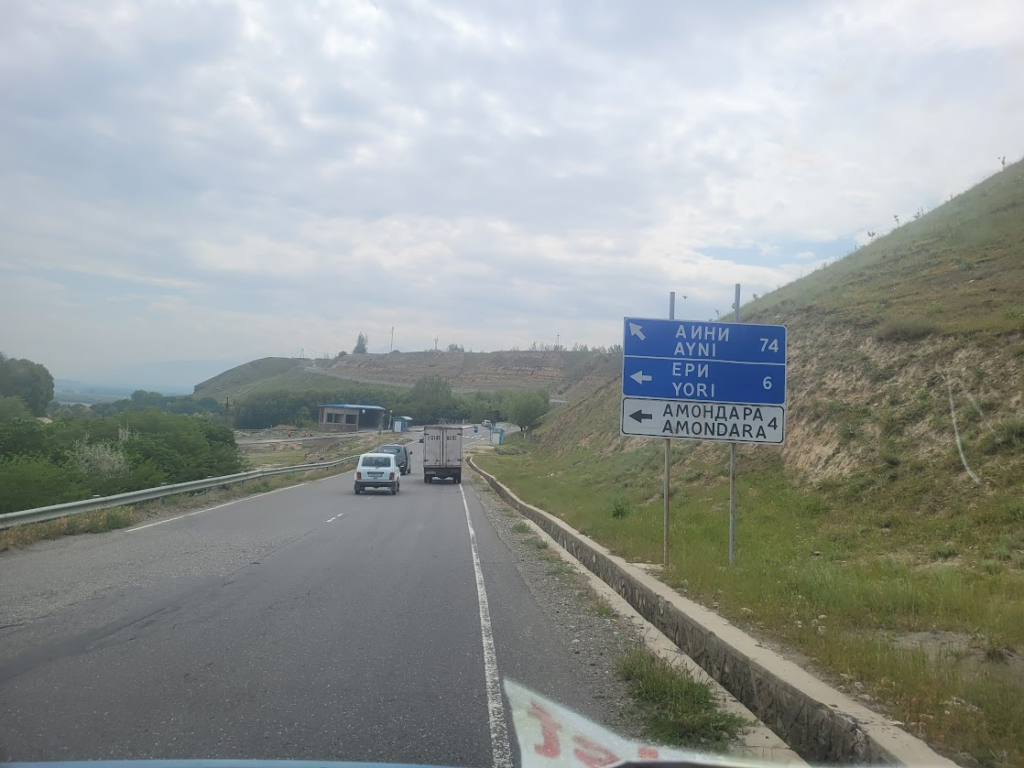
We were driving through the Fann Mountains, a part of the Pamir mountain range. The scenery was really pretty. The road condition was good throughout the drive to Dushanbe.
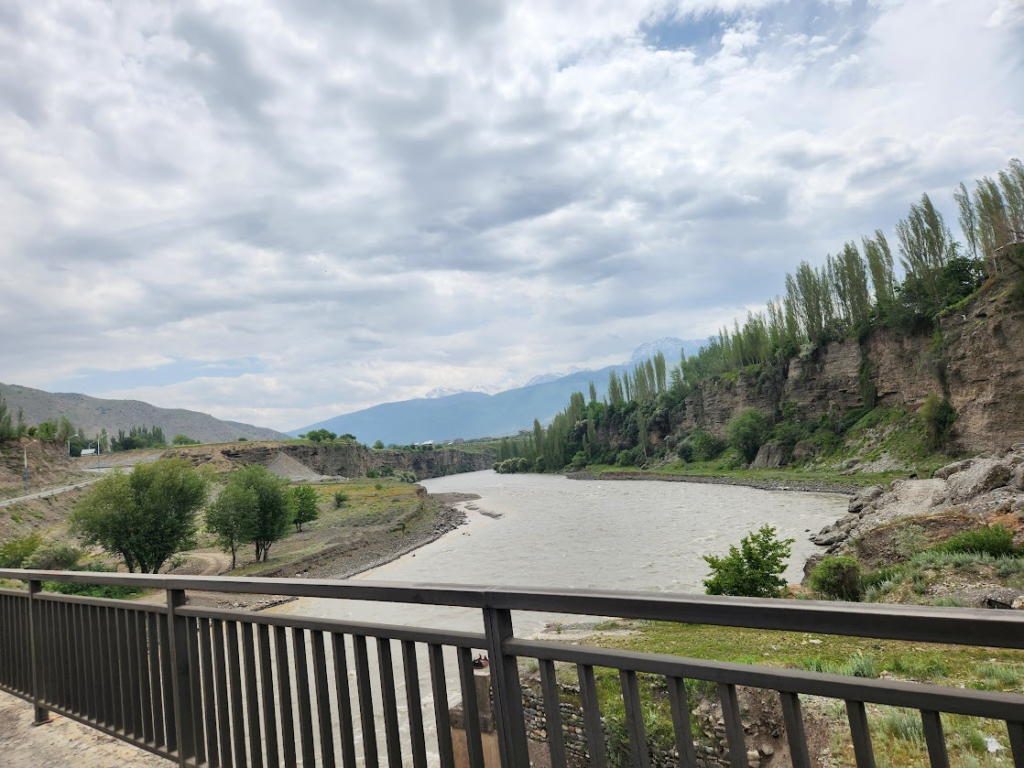
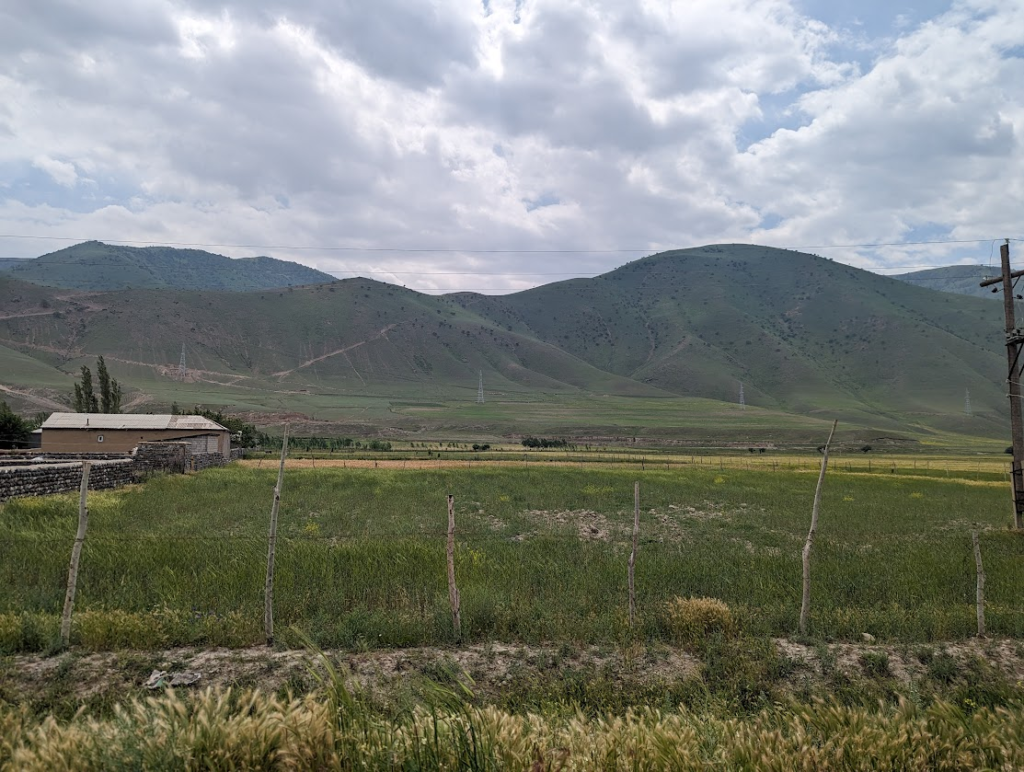
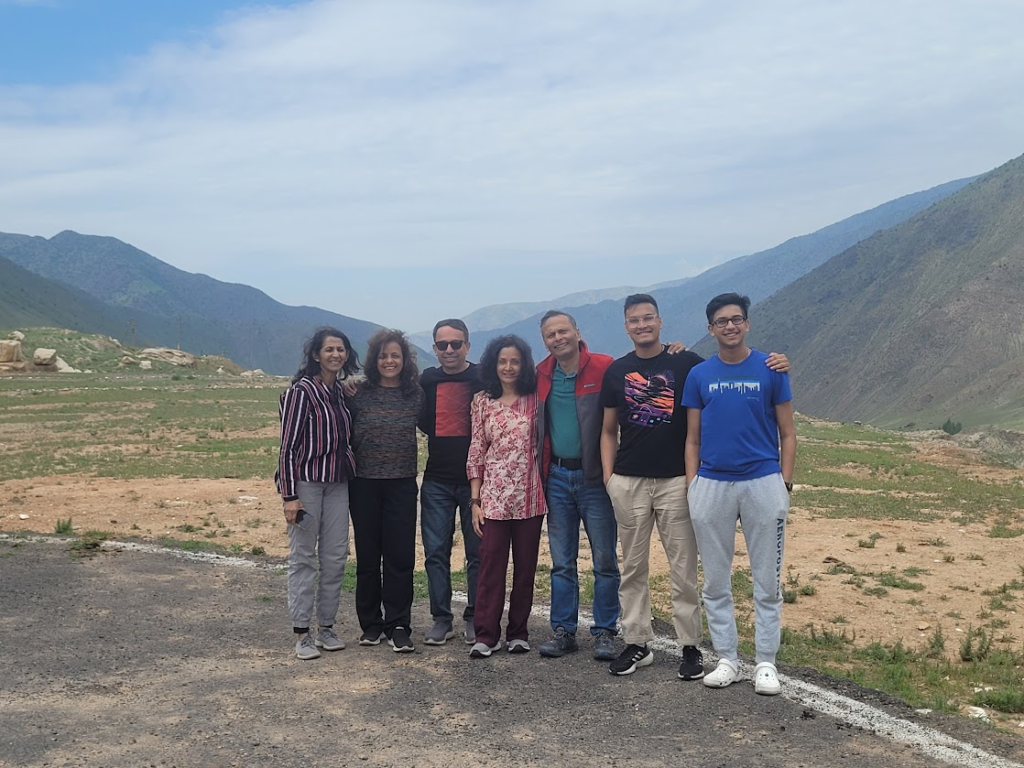


We reached Iskanderkul at about 2 pm. Iskanderkul is a mountain lake of glacial origin. It lies at an altitude of 7,201 ft on the northern slopes of the Gissar Range in the Fann Mountains. Triangular in shape, it has a surface area of 3.4 square kilometres and is up to 236 ft deep. Typically, tourists do a day trip from Dushanbe to visit Iskanderkul. We saw it along the way.
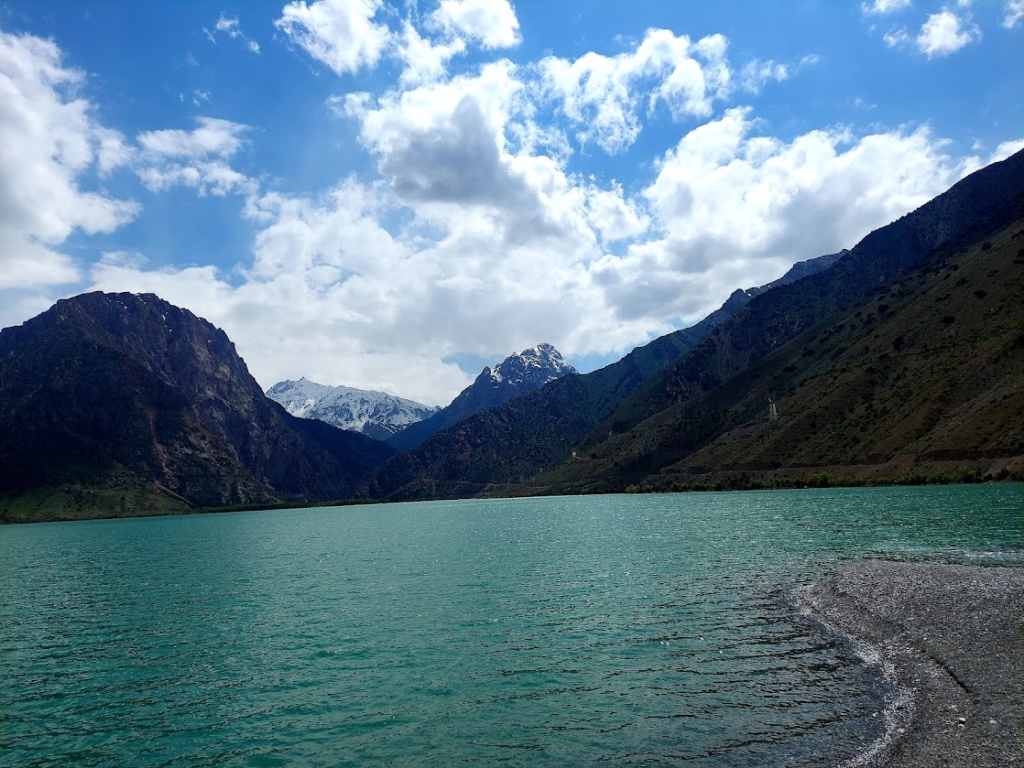
We had lunch at a cafe in Iskanderkul. We also did a little walking to see nice sights in the region.
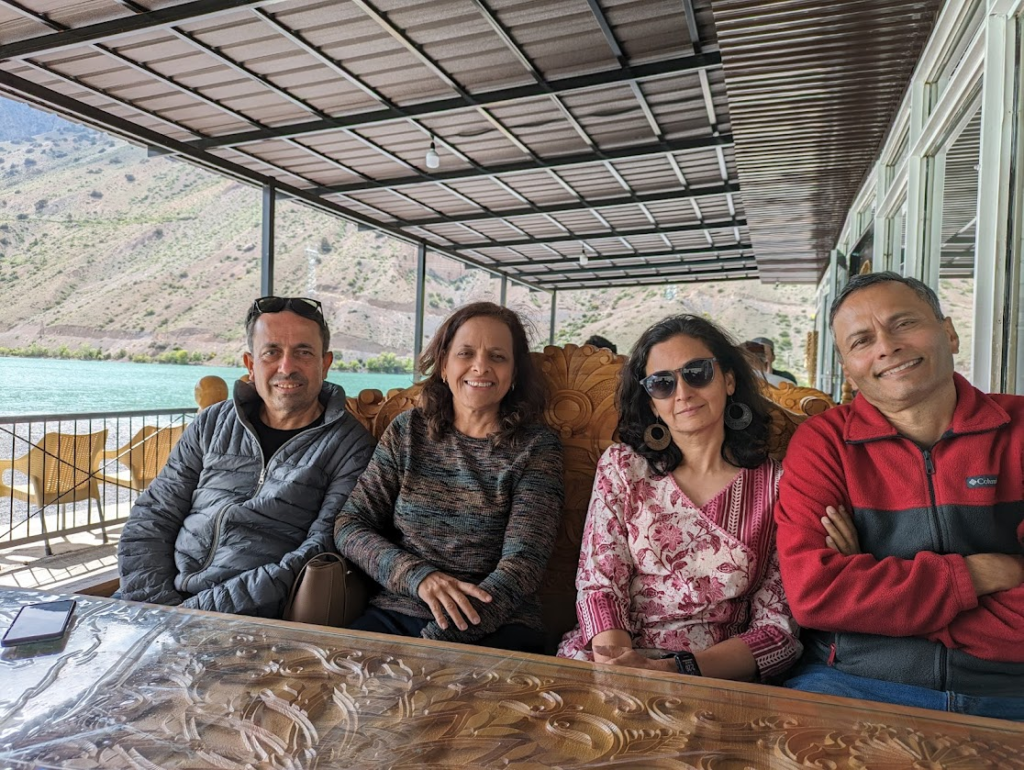

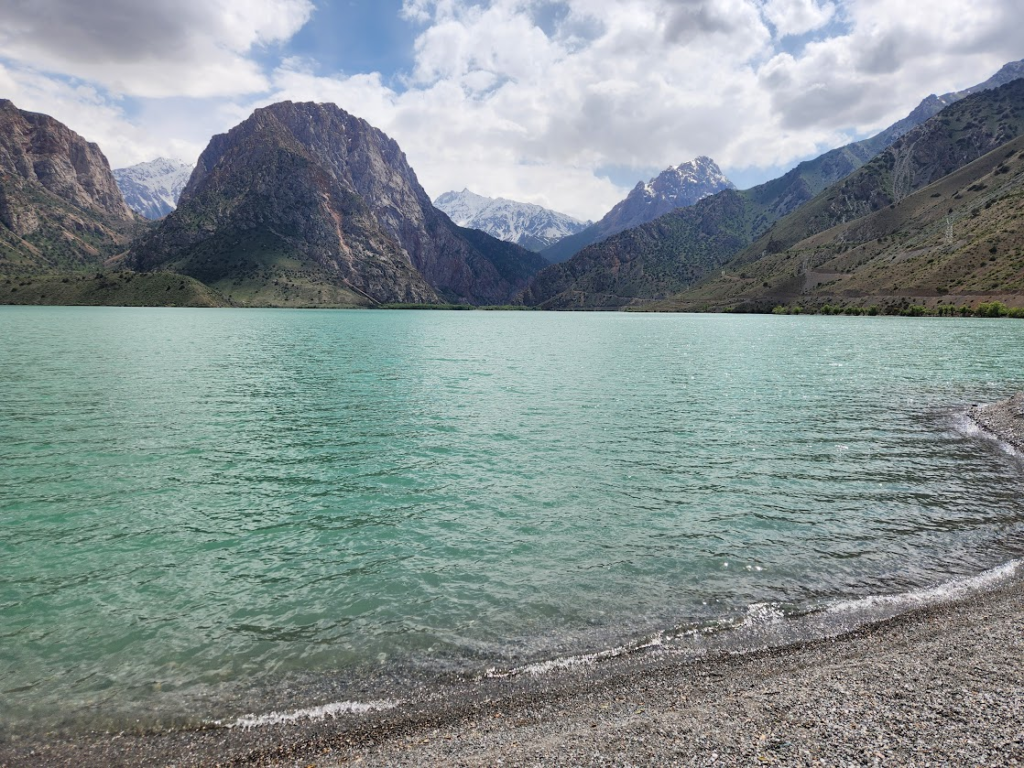
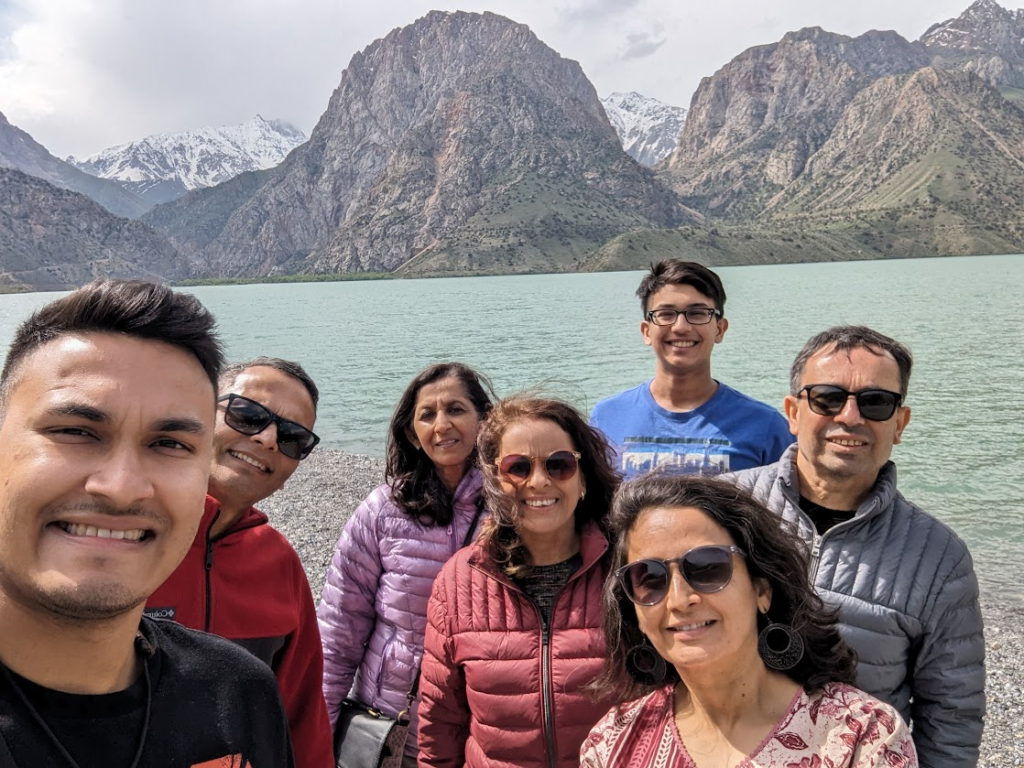

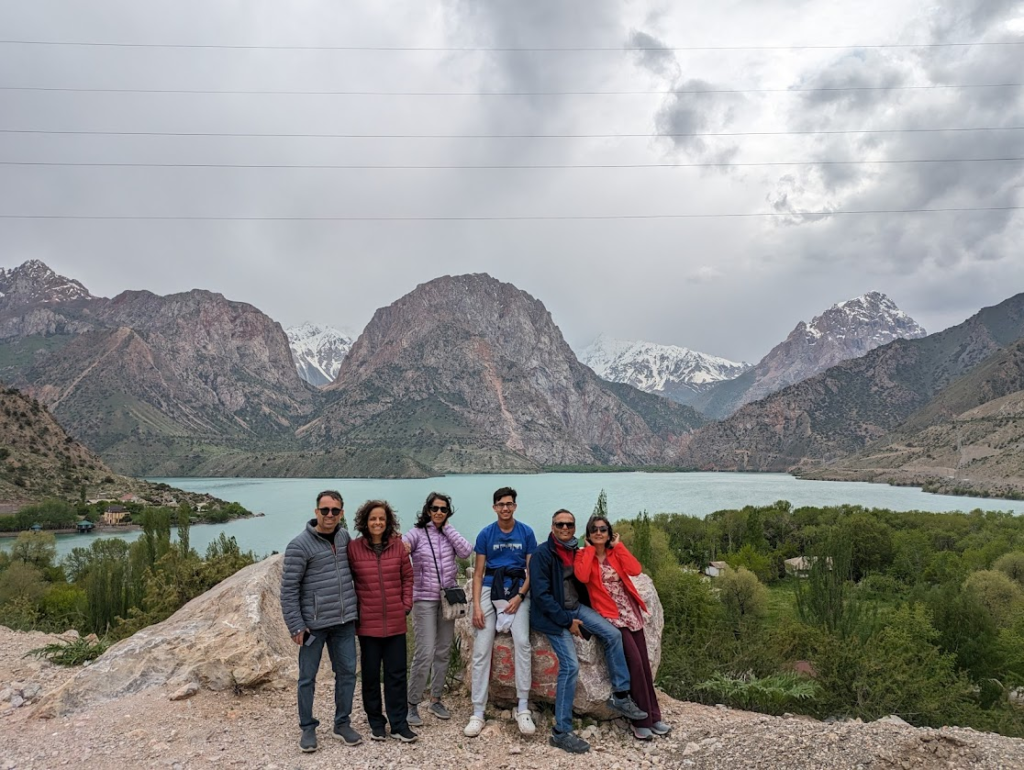

There was also a nice waterfall close to Iskanderkul.
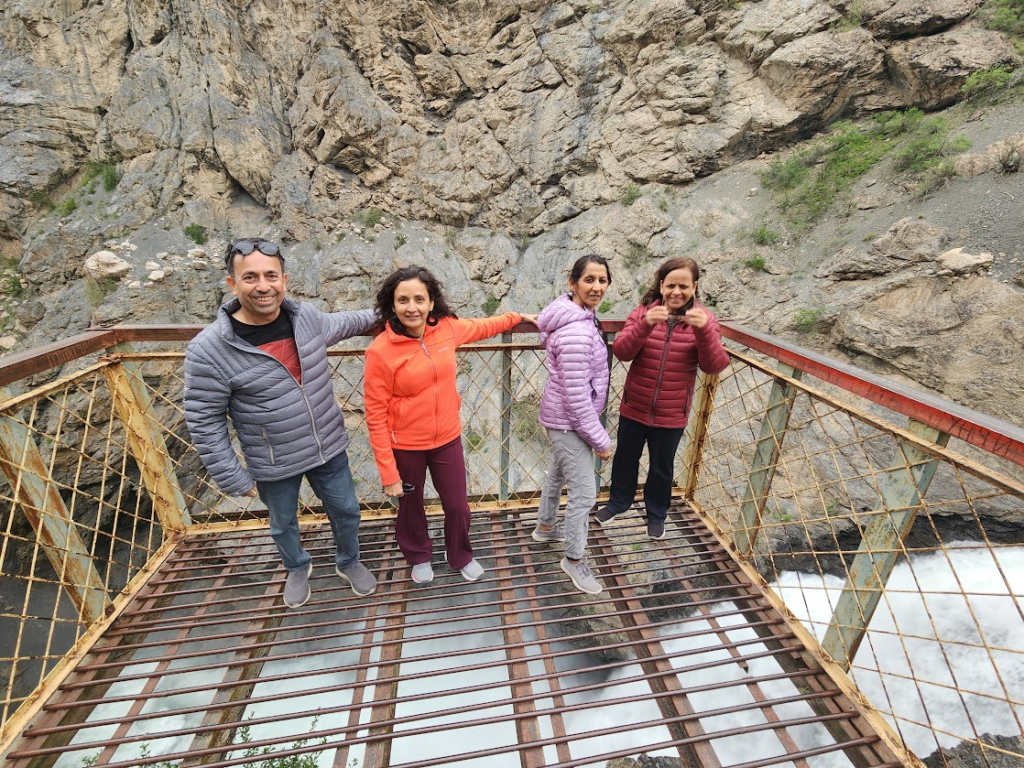
We left Iskanderkul around 5 pm and headed for Dushanbe. We saw amazing snow-clad mountains.
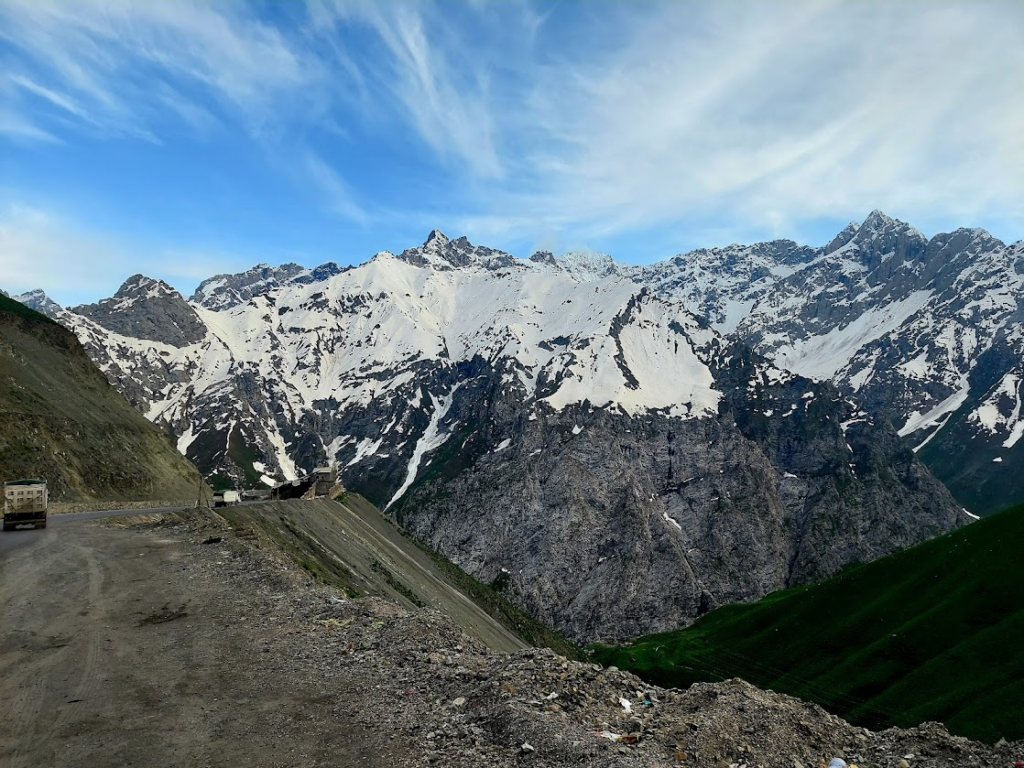
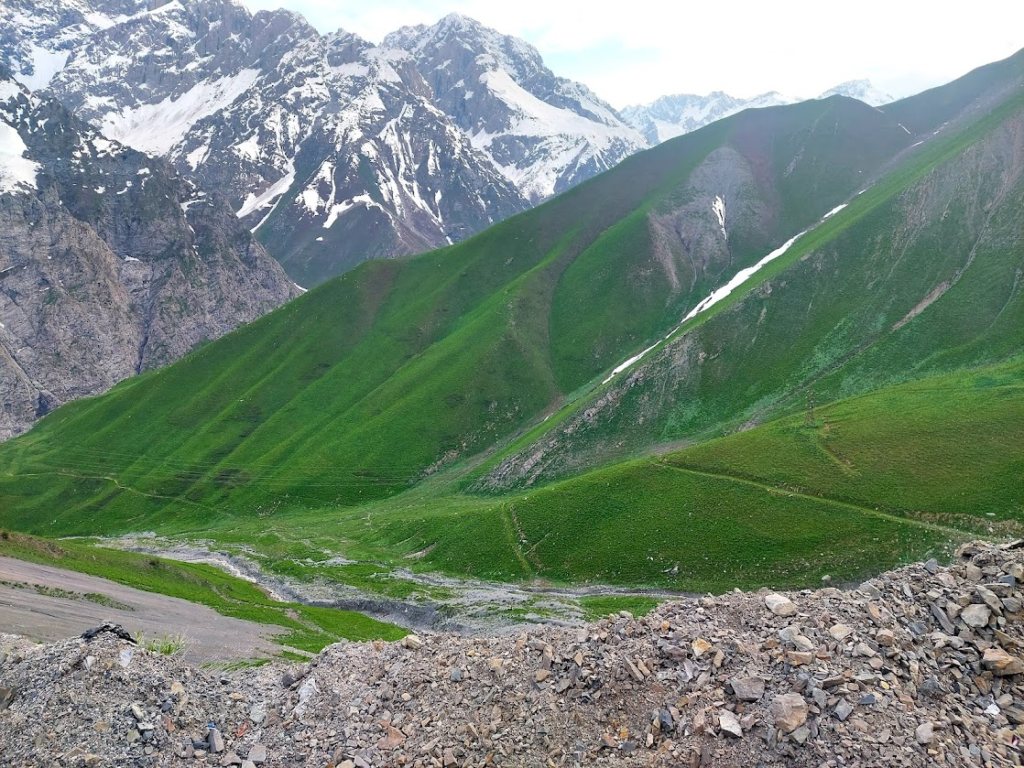
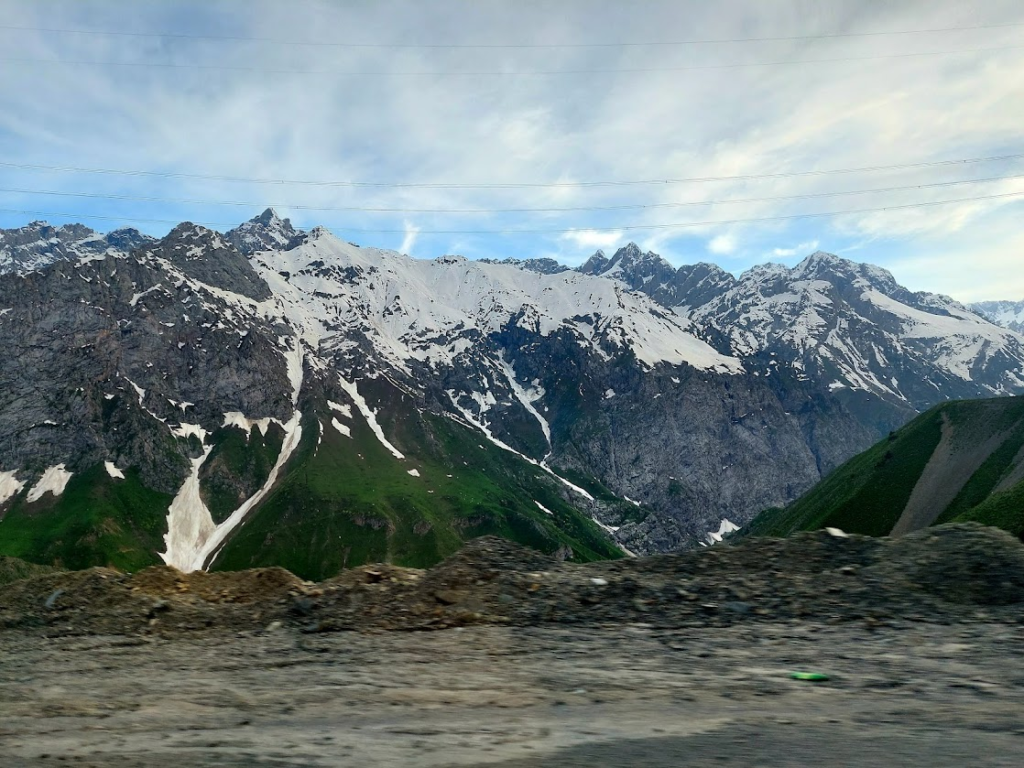
We reached the Vatan Dushanbe hotel in Dushanbe around 8 pm. Though we had reservations, the hotel said they did not have any rooms. There was a lot of discussion and then they put us up in service apartments about 2 kms from the original location. We finally got into our rooms at about 10 pm. Really bad experience with checkin. The rooms we got were quite good though.
Day 2: Thu, May 23, 2024: Dushanbe City
We started our day at around 9.30 am and we were met by our guide Mira, arranged by tour company Gems of Tajikistan. We used taxis during our day trip and some walking. Taxis in Dushanbe run by meter and cost about 10-15 somonis ($1-1.5) depending on the distance. They all run by meter, no problems.
Dushanbe, the capital, is a very modern city unlike Bukhara or Samarkand. Until 1929, the city was known in Russian as Dyushambe, and from 1929 to 1961 as Stalinabad. From the 17th to early 20th century, Dushanbe grew into a market village. Dushanbe was captured by the Bolsheviks in 1922, and the town was made the capital of the Tajik Autonomous Soviet Socialist Republic in 1924.
Our first stop for the day was the Ismoil Somoni monument. This monument was placed in 1999 in honor of 1100 anniversary of the state of the Samanids. Ismoil ibn Akhmad Somoni who lived in the 9th century AD, was the amir from the Sasanids dynasty, and the founder of the state in Central Asia.


There was a beautiful walkway behind the monument with fountains and some buildings.

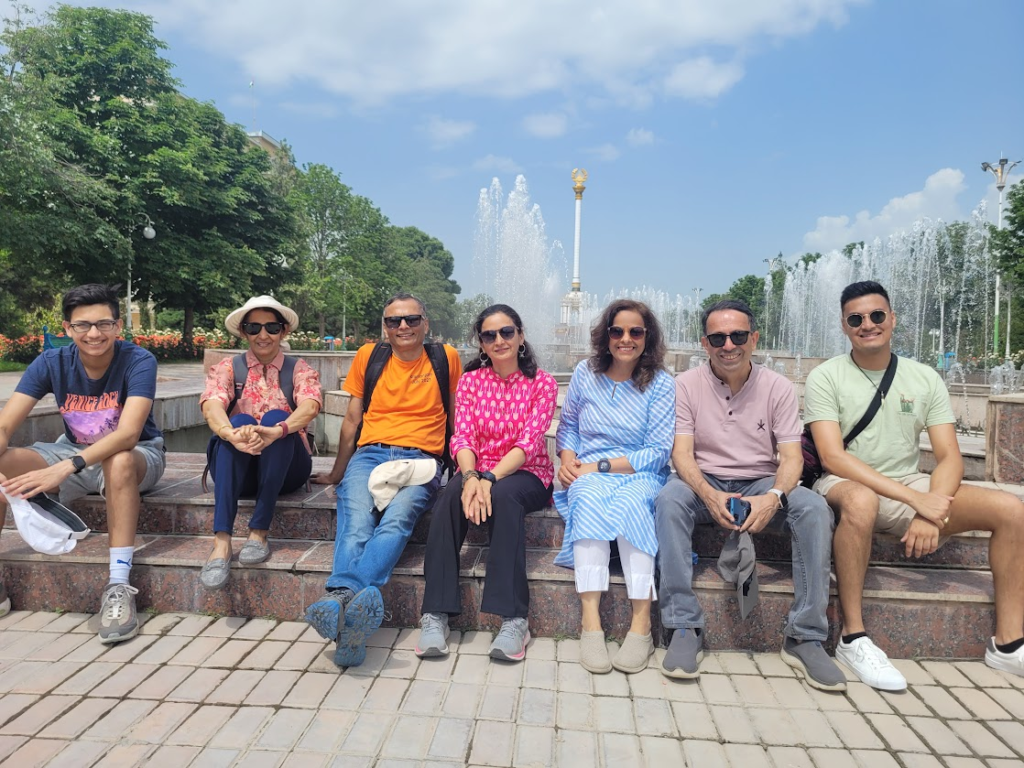
The National Library called the “Kitobkhona” (similar to Hindi Kitabkhana) is in the shape of an book that is open at its spine.
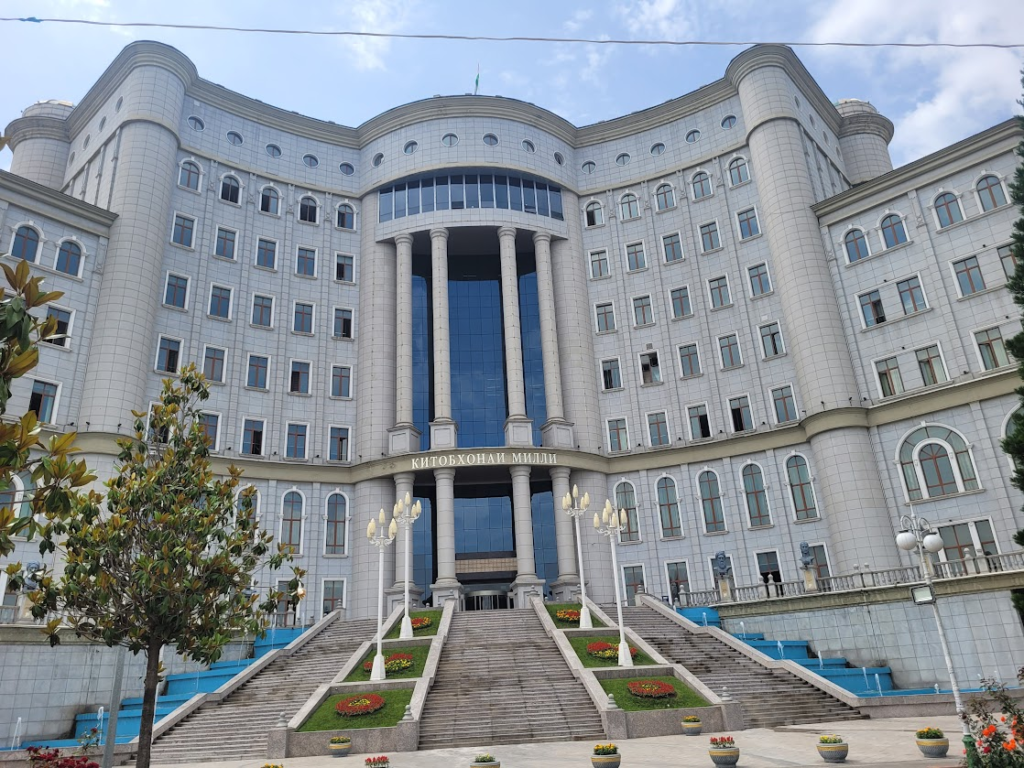
At the end of the walkway behind the Ismoil Somoni monument was an artificial waterfall.
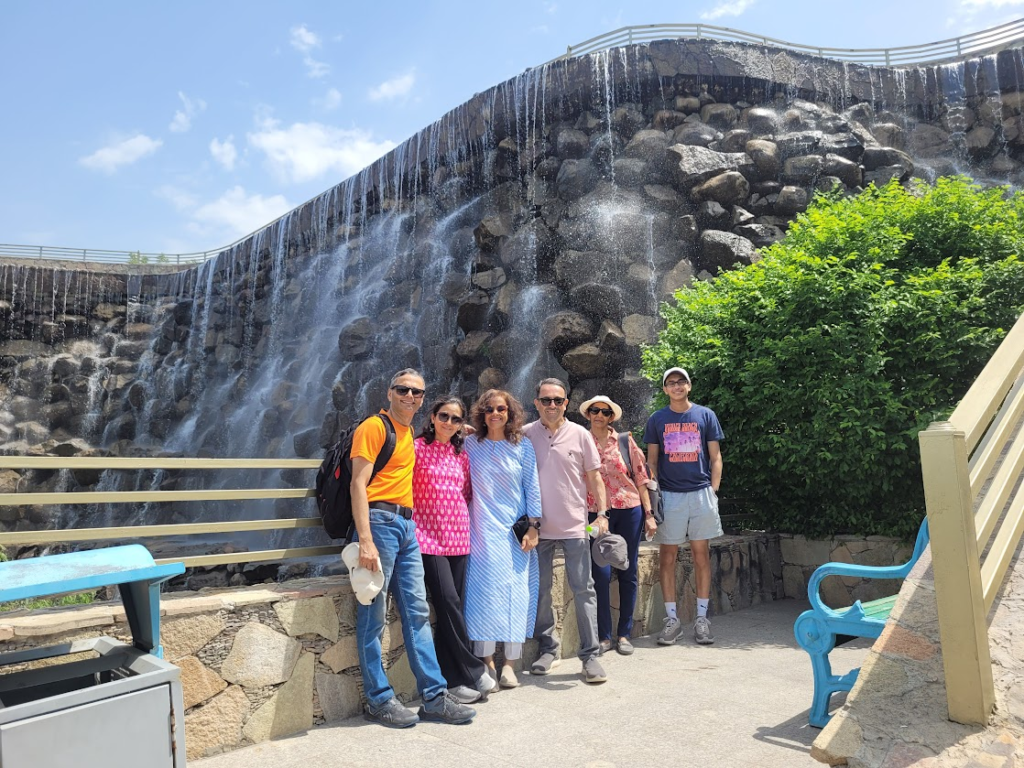
We walked down to national symbol of Tajikistan.

We then walked over to Rudaki park, a scenic, meticulously landscaped garden area featuring fountains, statues, manicured lawns, trees from across the globe and a plethora of stunning flowers. Rudaki who lived in the 9th century was a poet, singer, and musician who is regarded as the first major poet to write in New Persian. A court poet under the Samanids, he reportedly composed more than 180,000 verses, yet only a small portion of his work has survived, most notably a small part of his versification of the Kalila wa-Dimna, a collection of Indian fables.
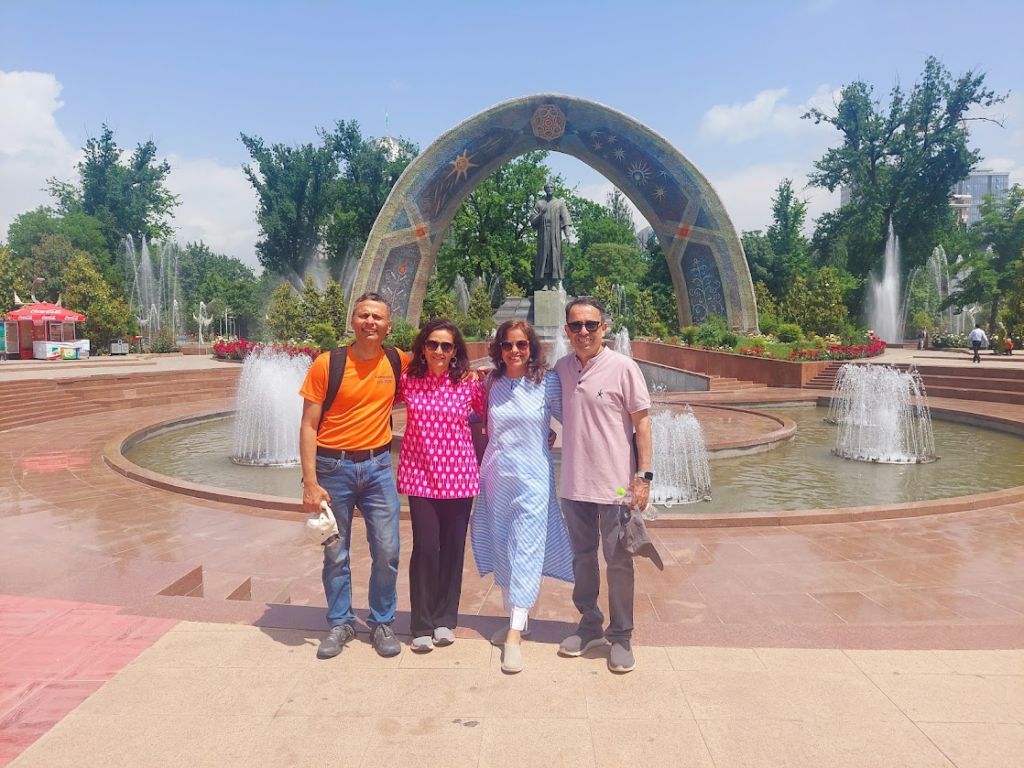
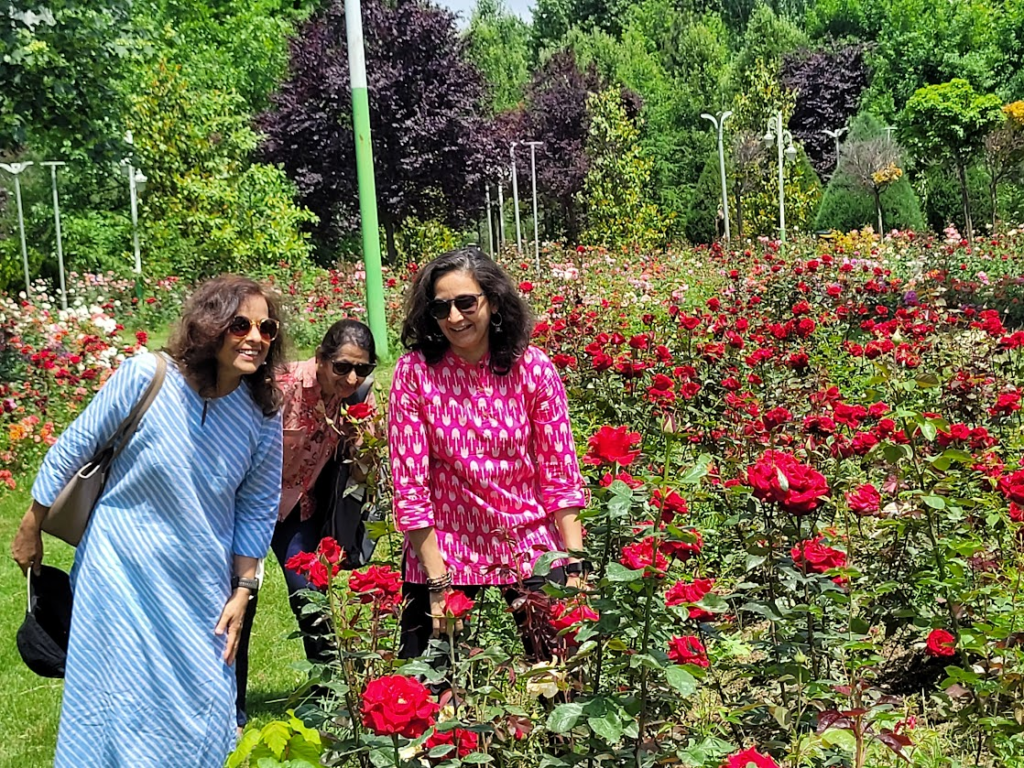
Next stop was the Haji Yaqub Mosque, the central mosque of Dushanbe. The mosque was built in 1856 with the financial support of Haji Yaqub and his mother.
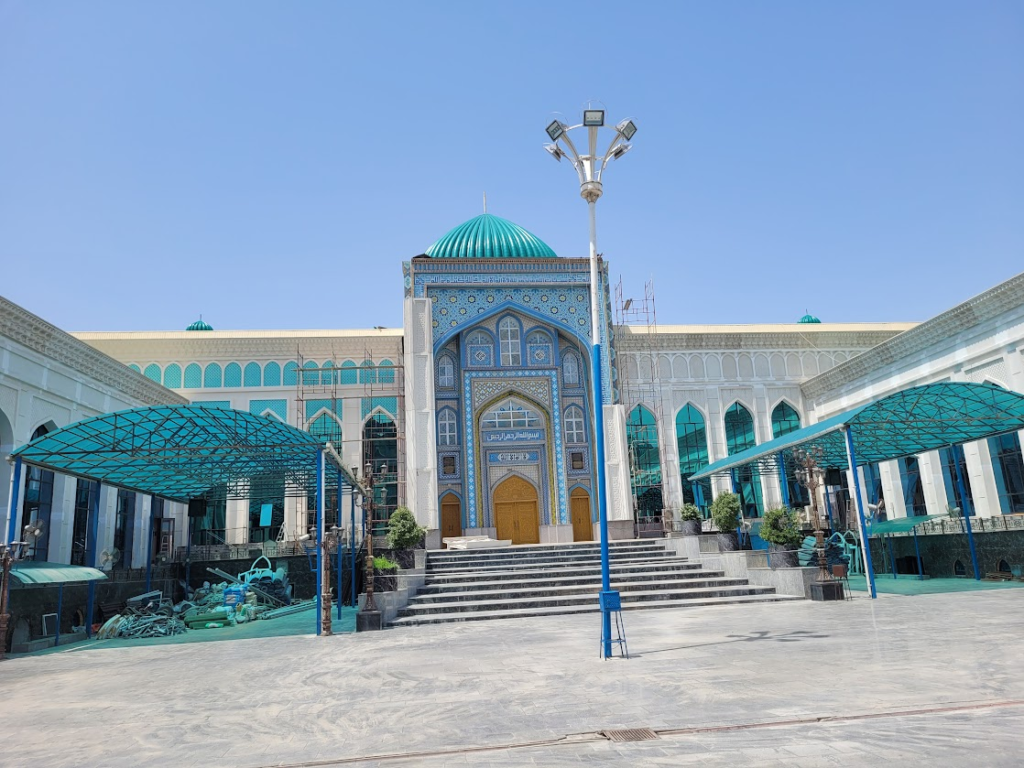

From the mosque, we proceeded to the Dushanbe botanical garden. It is a very large area. We decided to hire one of the small buses that run within the garden.
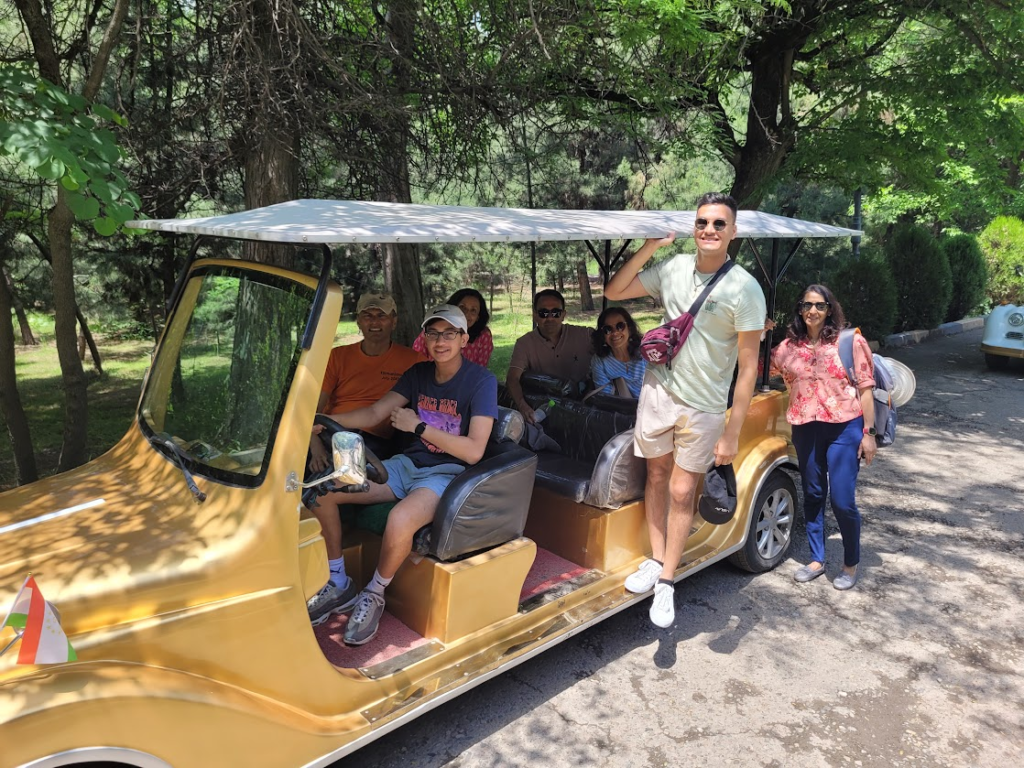
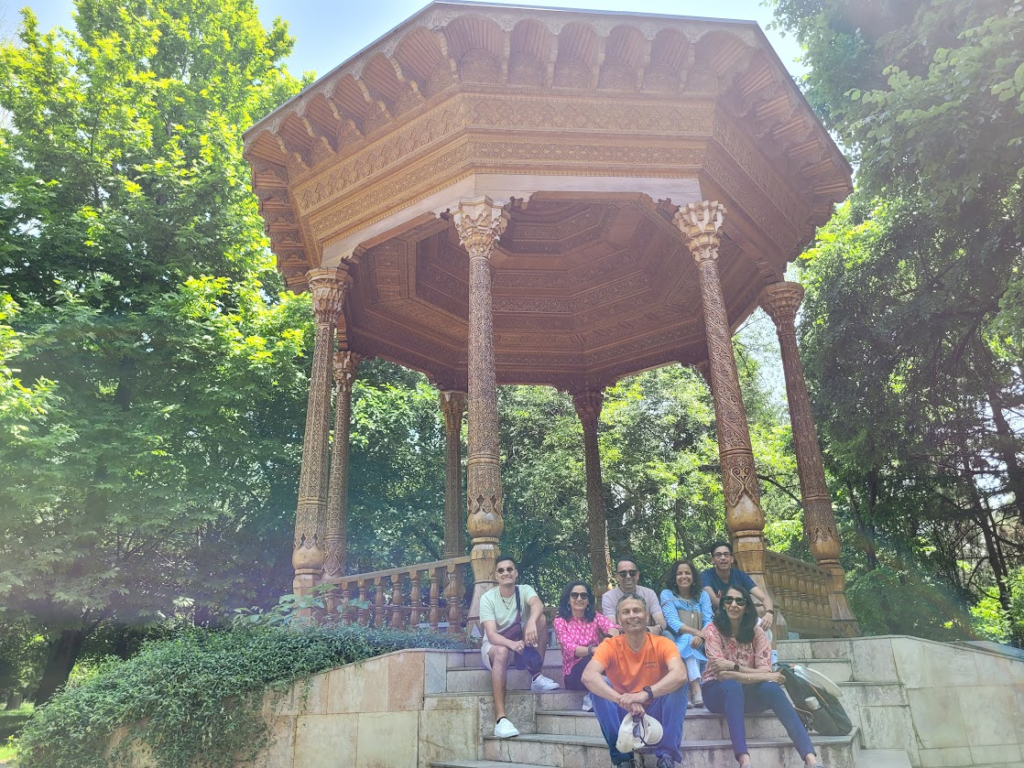
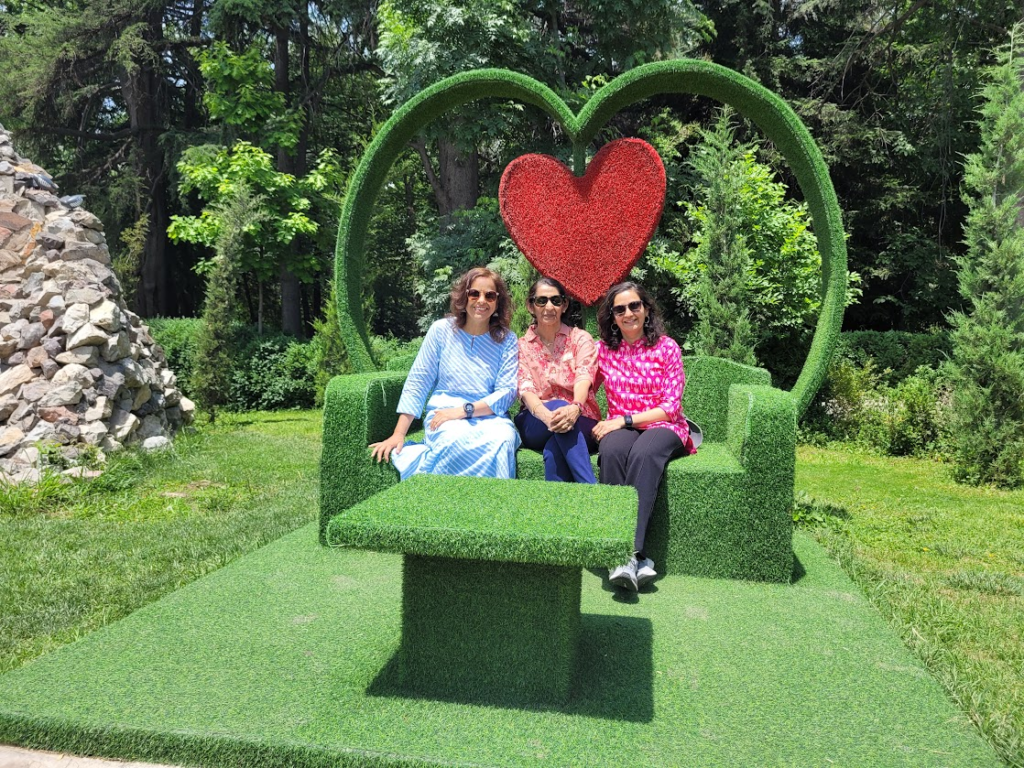
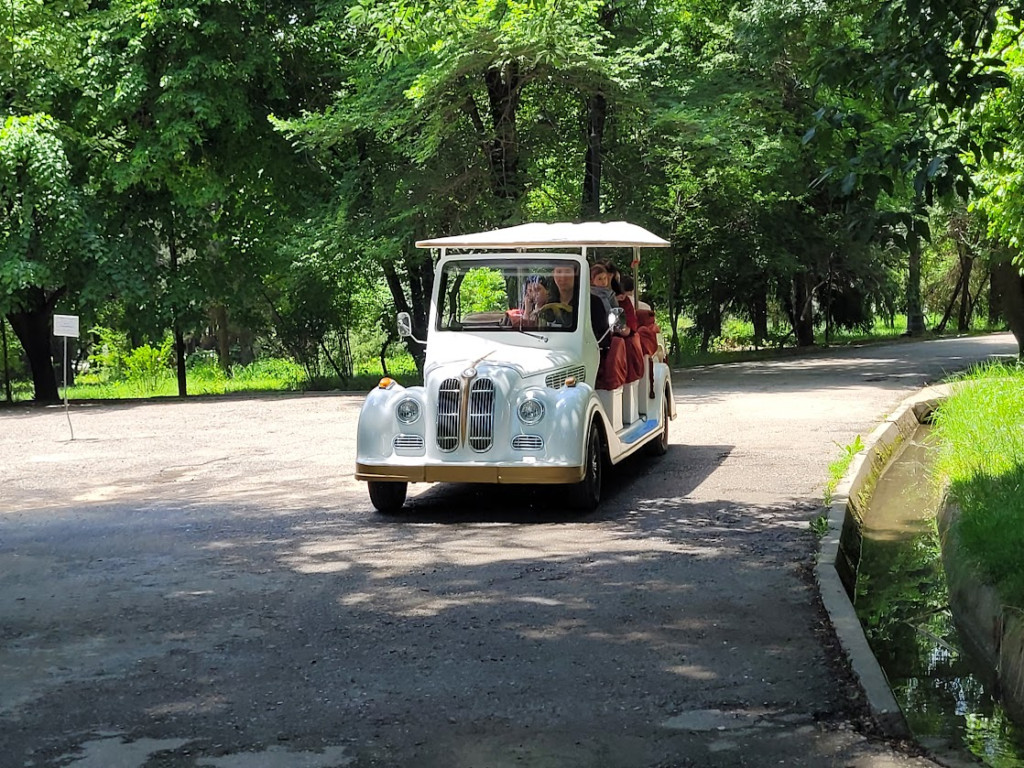
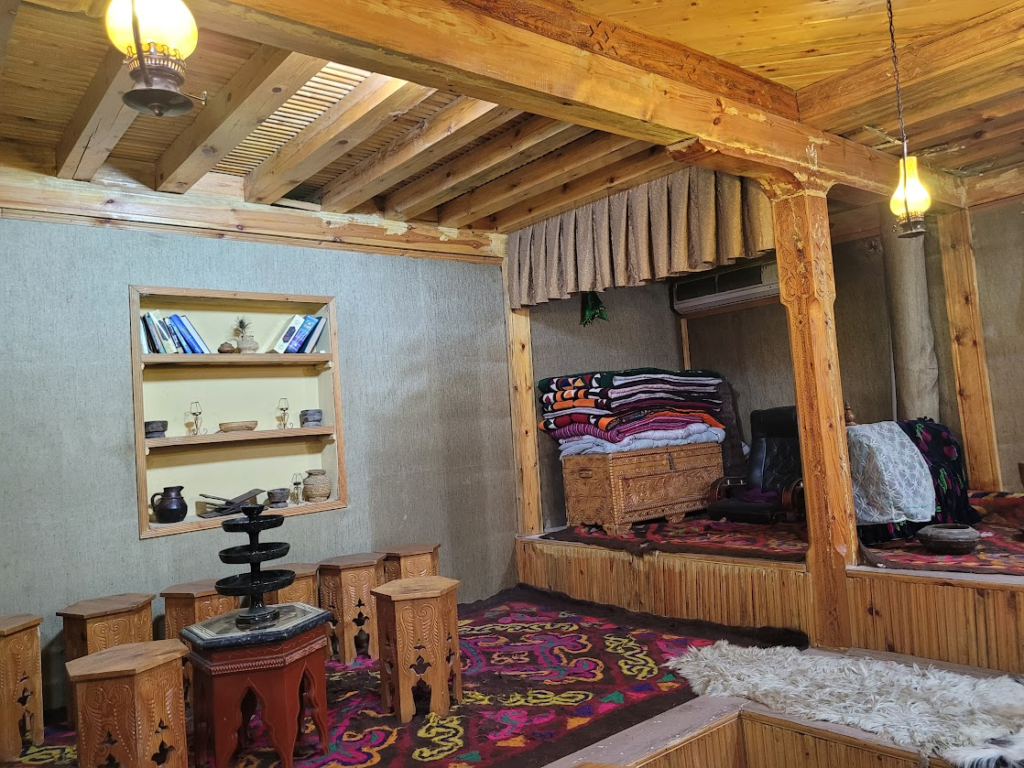
Our last stop of the guided tour of Dushanbe was at Navruz Palace, a palace is decorated with the precious materials , stones and wood. The first floor is used for the ceremonies and the second floor for the summits or international conferences. The rooms are extremely ornate. There is a 50 somoni ($5) ticket to see the palace with a guide. It is a private building, not run by the government.
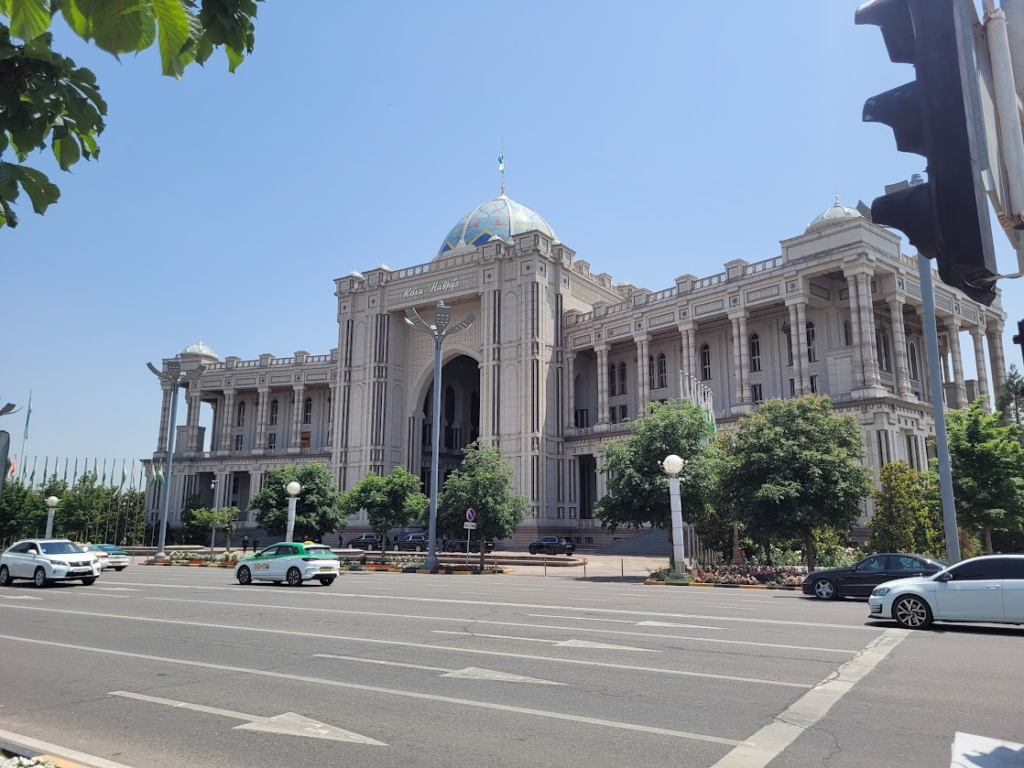
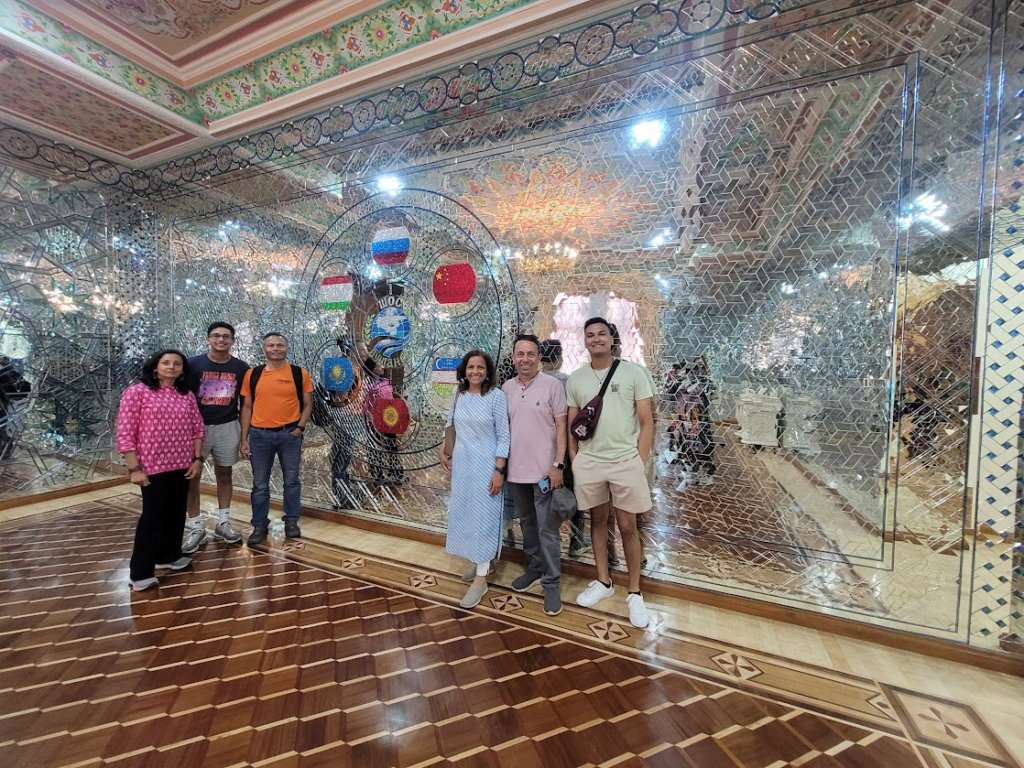
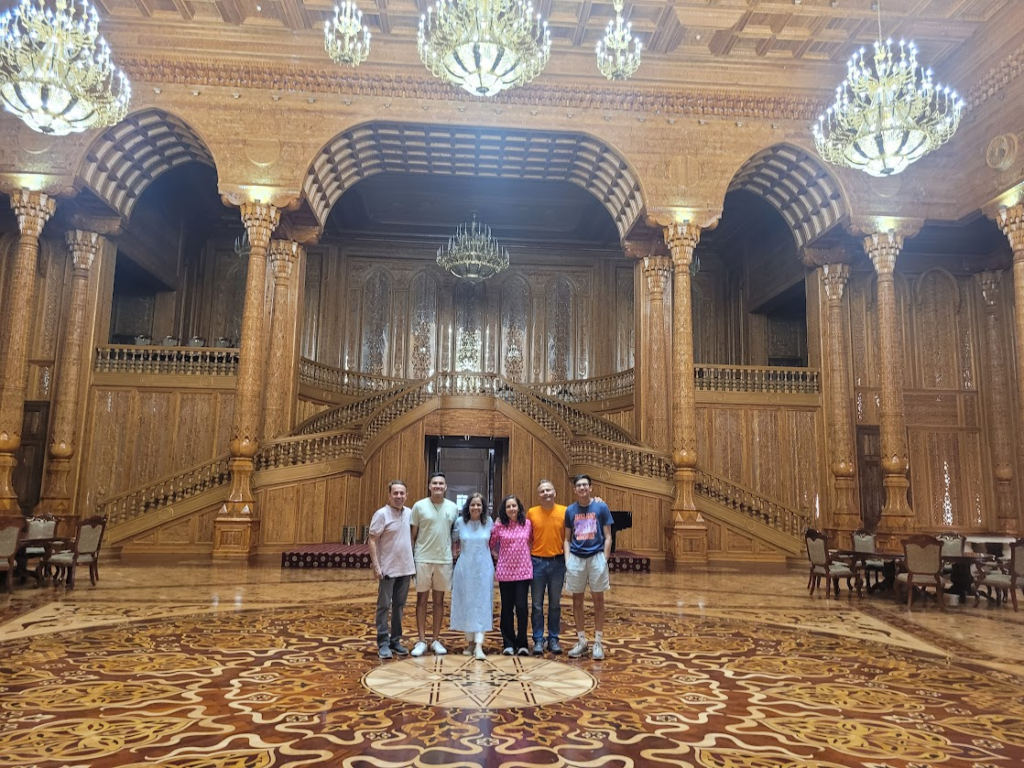
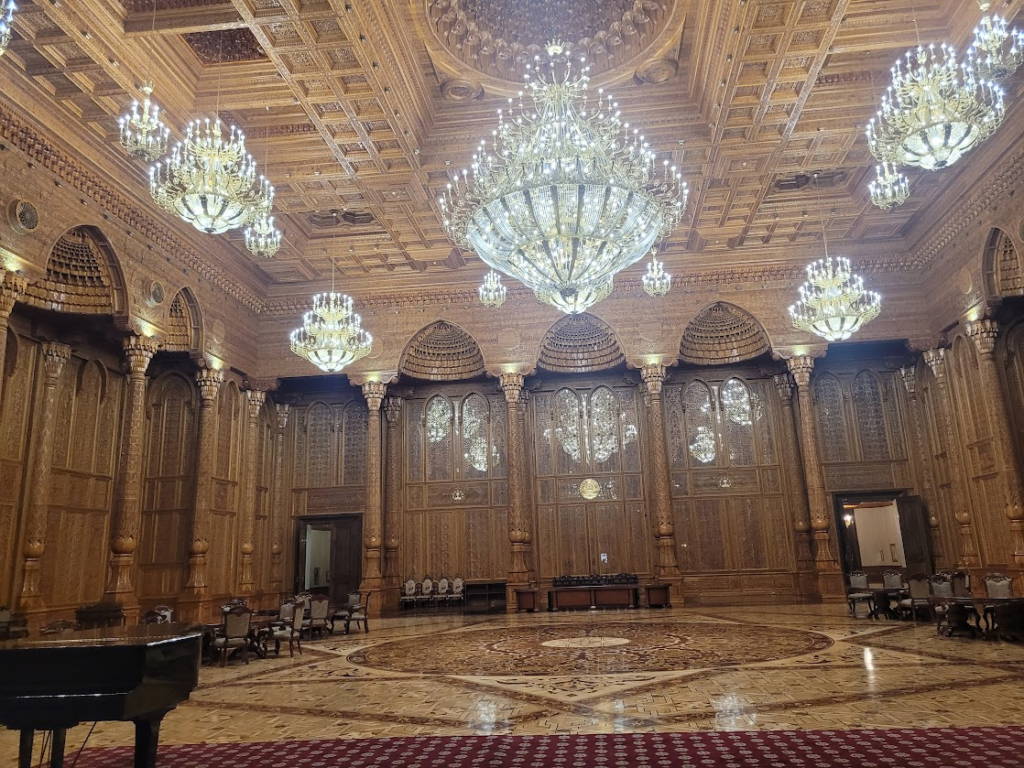

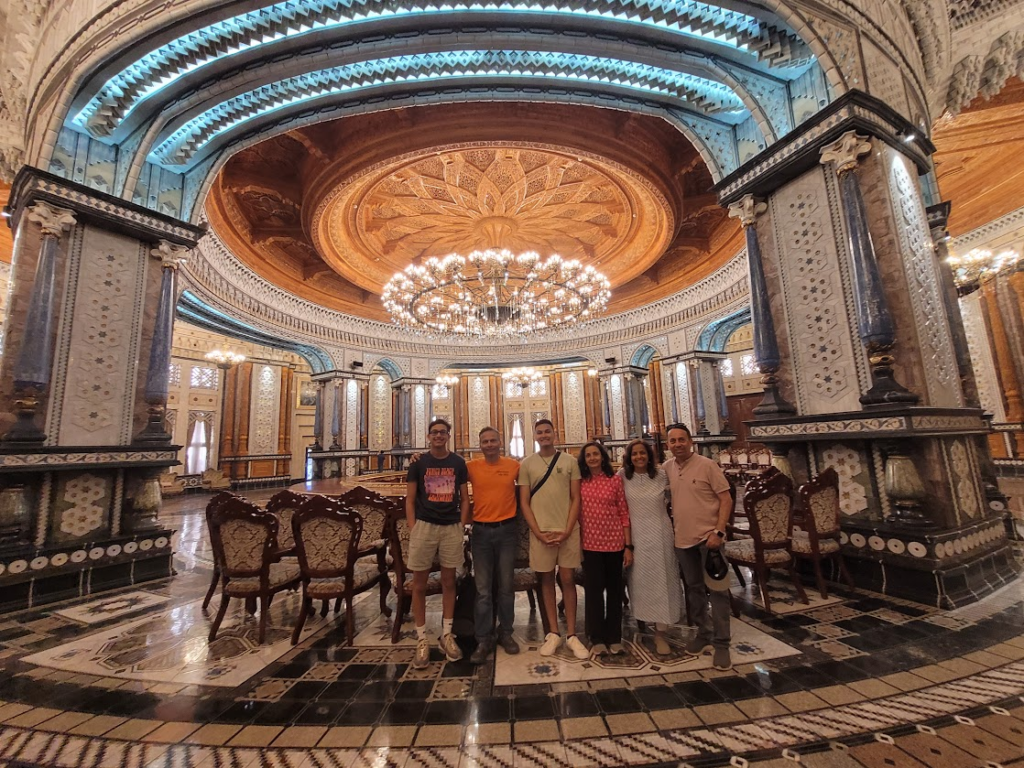
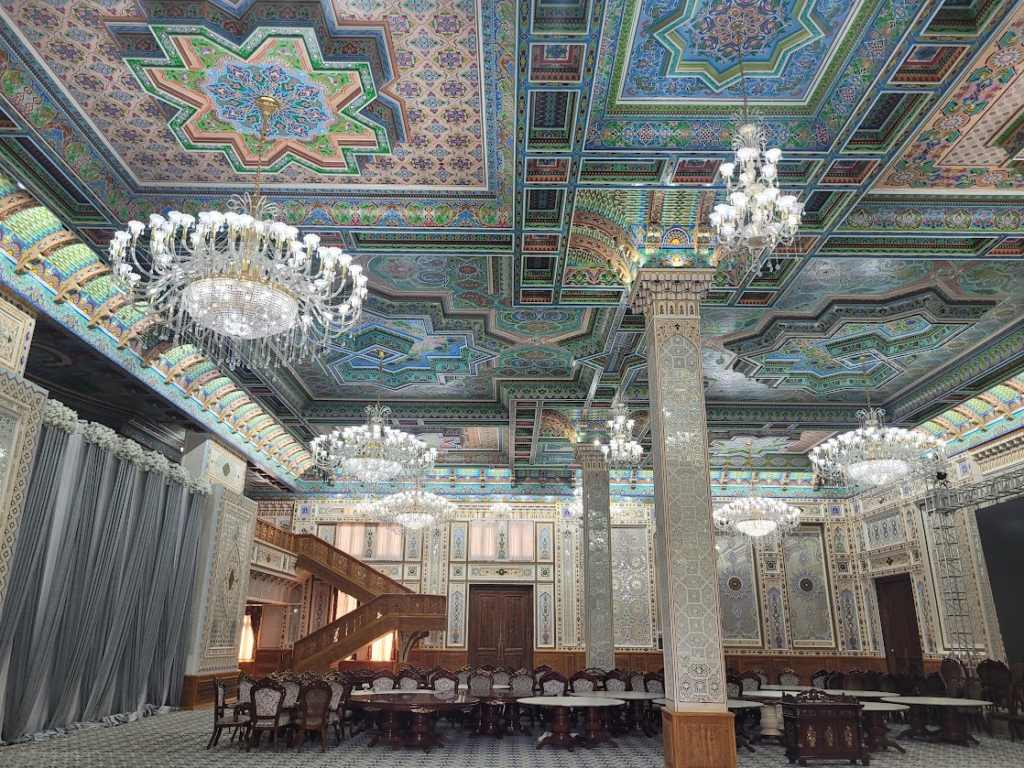
We let our guide Mira go after visiting Navruz palace. We did not have a good experience with him as a guide. He was simply taking us to various places without really explaining why they were historically or culturally significant. A lesson learned is that always talk to the guide before embarking on a tour with the guide. Explain to the guide how you like to see places. That way, there is a good chance that your styles will match.
After lunch, we visited the the National Museum of Tajikistan. It had 3 floors and covered the history, culture of Tajikistan in great detail. A significant part of the museum was devoted to Emomali Rahmon, a Tajik politician who has been serving as the 3rd President of Tajikistan since 16 November 1994. He is pretty much the dictator of Tajikistan. The museum was quite interesting, especially given the proximity of Tajikistan to India.
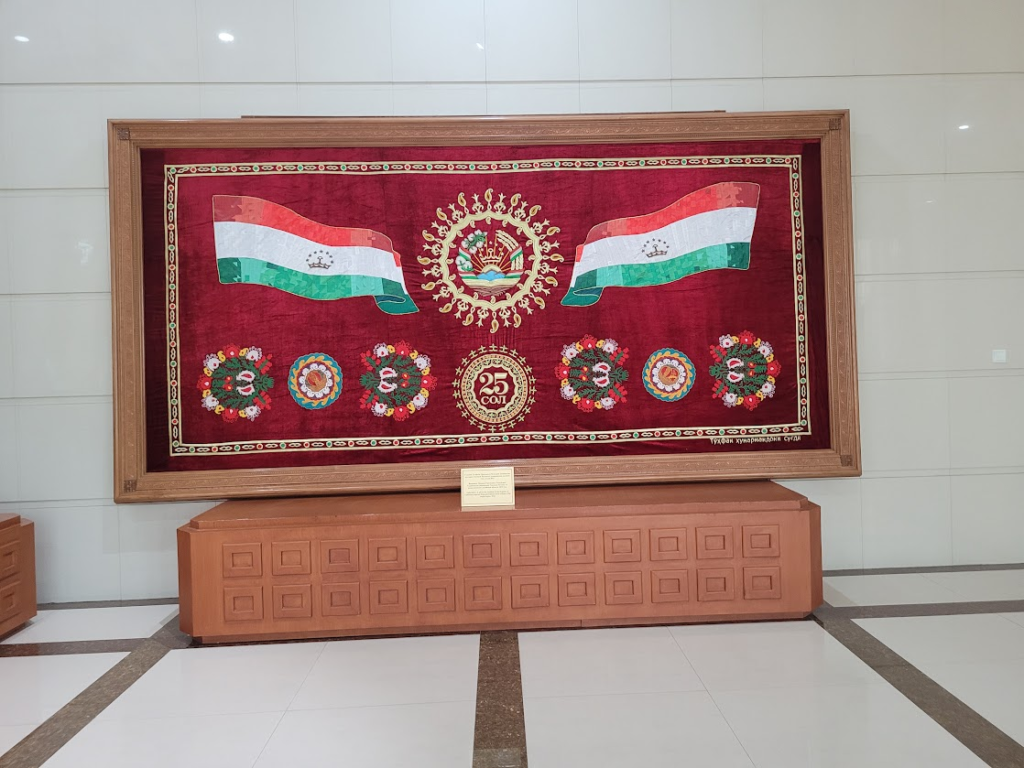
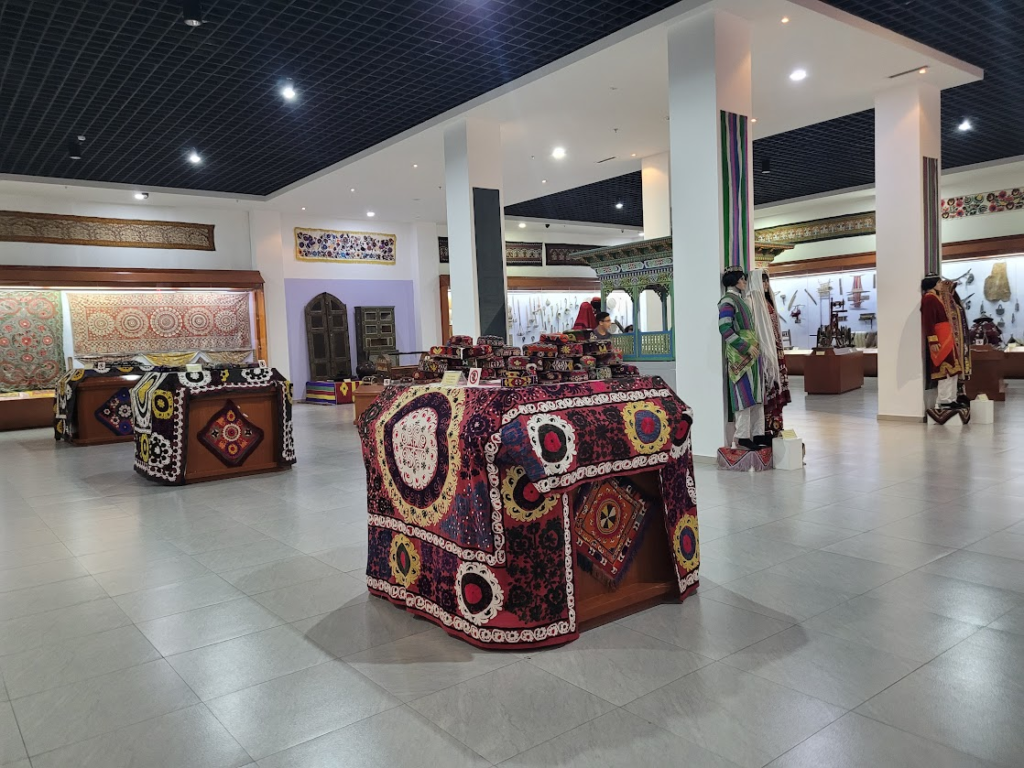
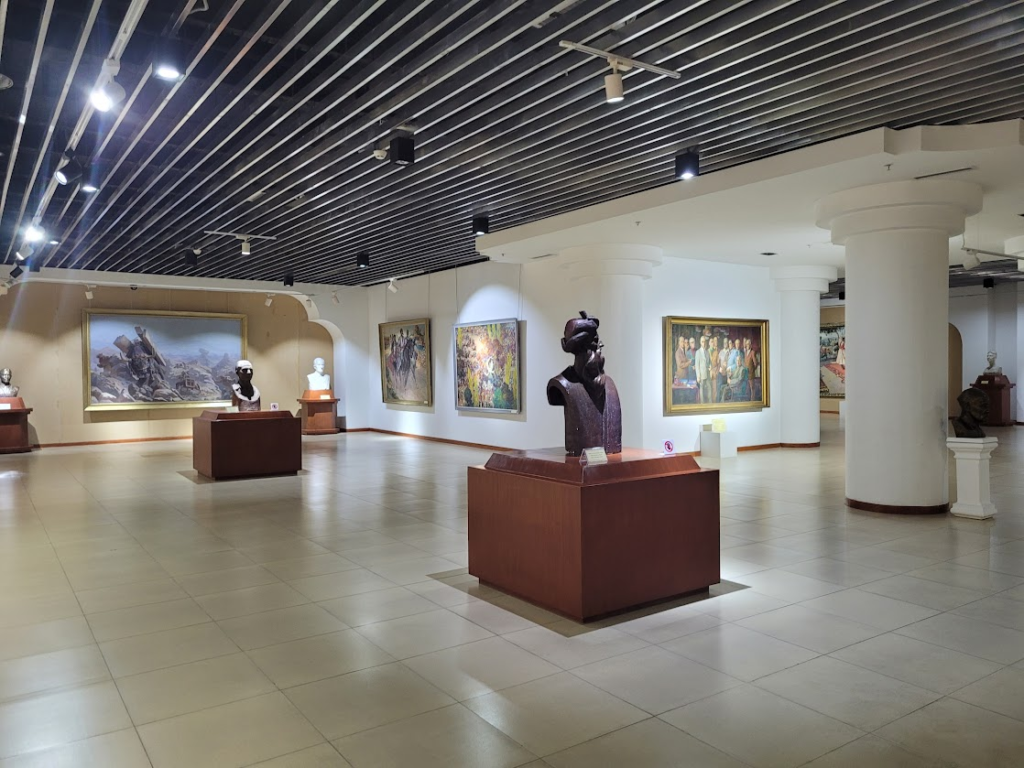
Final stop was a giant flagpole with a large Tajik flag. It is a free–standing flagpole located in front of the Palace of Nations in Dushanbe, Tajikistan. At 541 feet, it is the fourth tallest flagpole in the world. The flag weighs 1,500 pounds.

We had dinner at Delhi Darbar, an Indian restaurant in Dushanbe. The food came relatively quickly and it was quite good. We had a hearty meal.
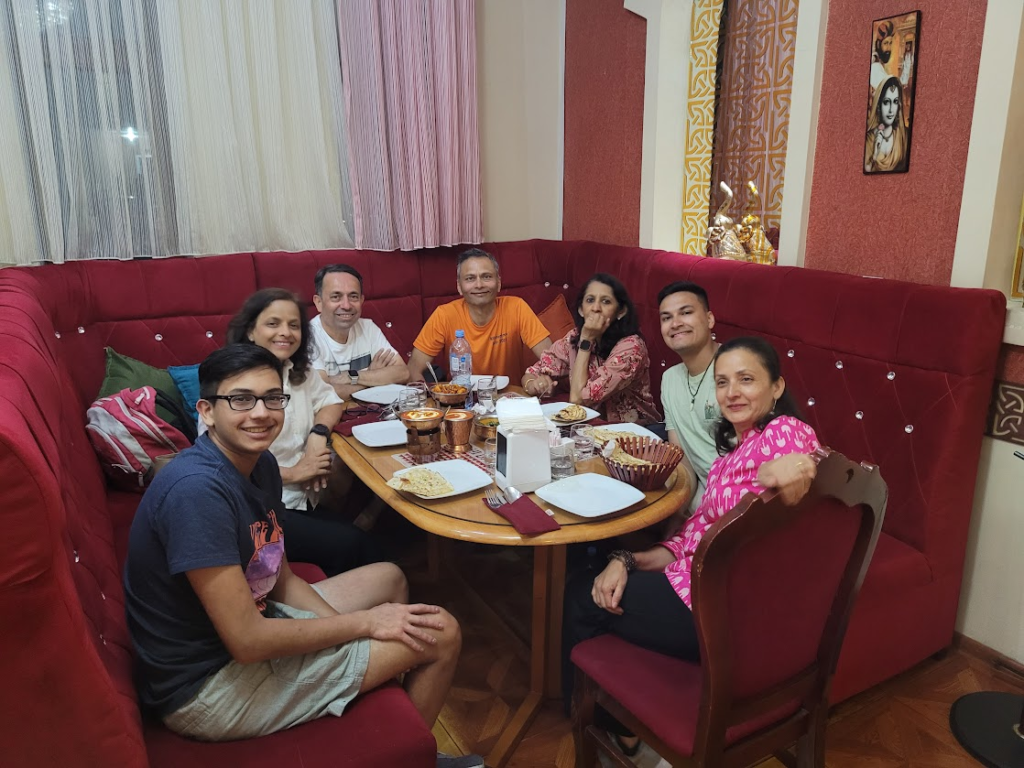
After dinner, we stepped out to see the Ismoil Somoni monument in the lights at night. We got professional photos taken for 2 somoni per photo (about $0.20).
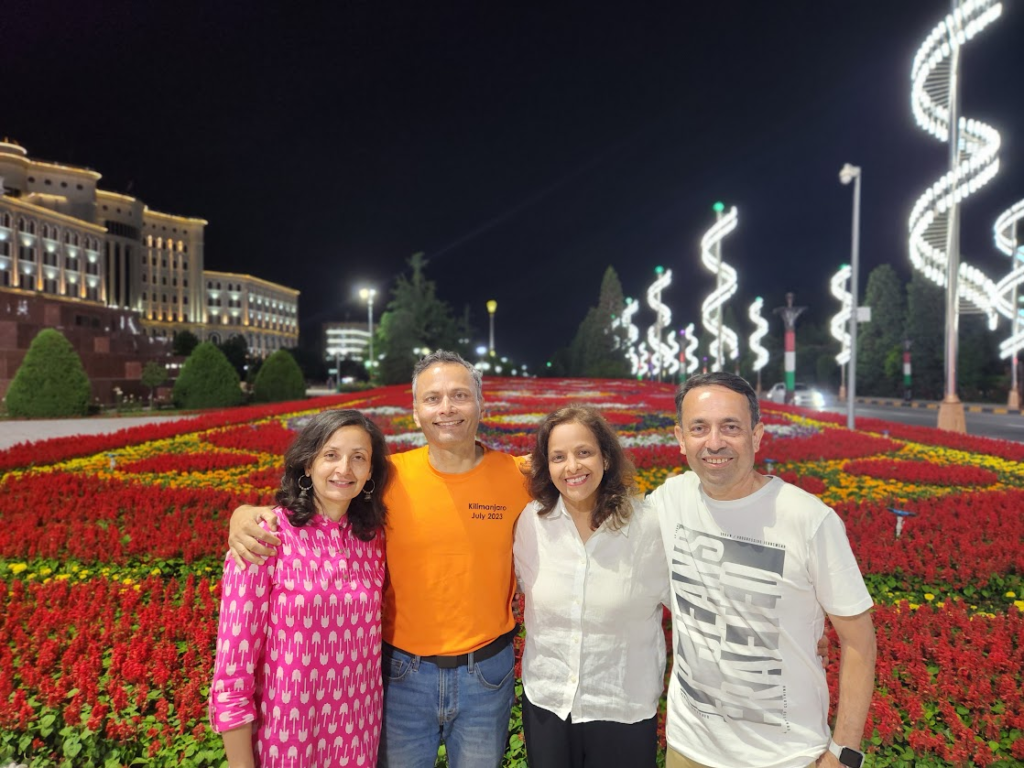


We ended the day with hot chocolate and coffee at a delightful cozy cafe near our apartment.
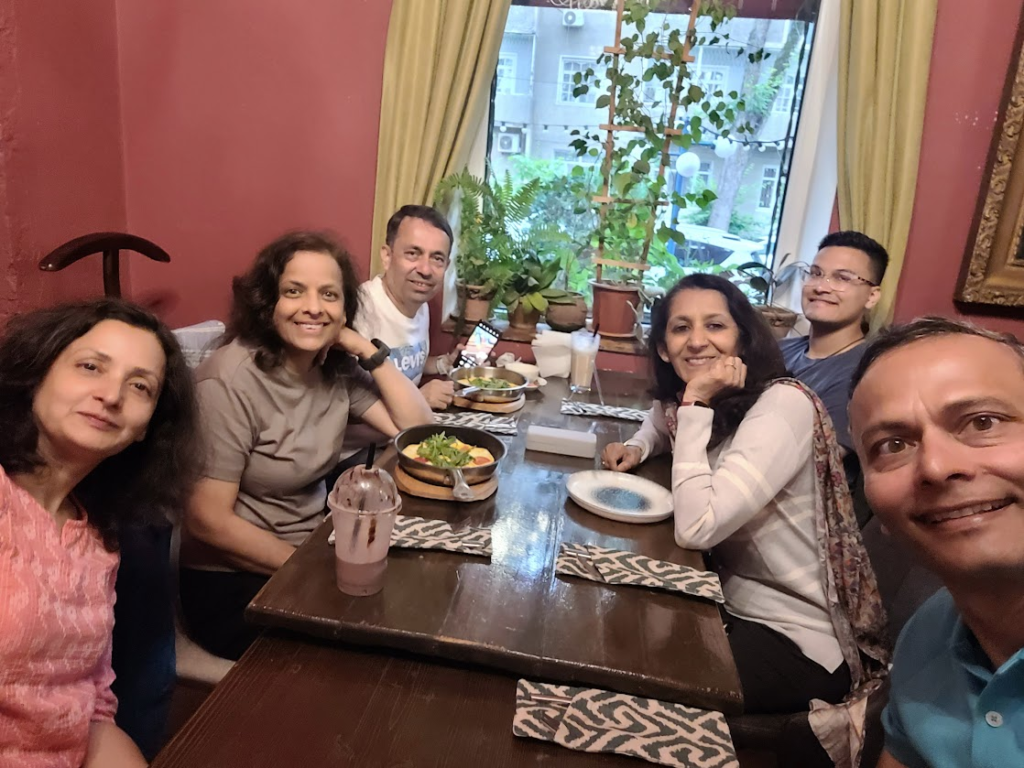
Day 3: Fri, May 24, 2024: Dushanbe to Almaty, Kazakhstan Flight
On Friday, we had a flight from Dushanbe to Almaty at 1.30 pm. We had a hearty breakfast and reached Dushanbe airport 10.30 am.
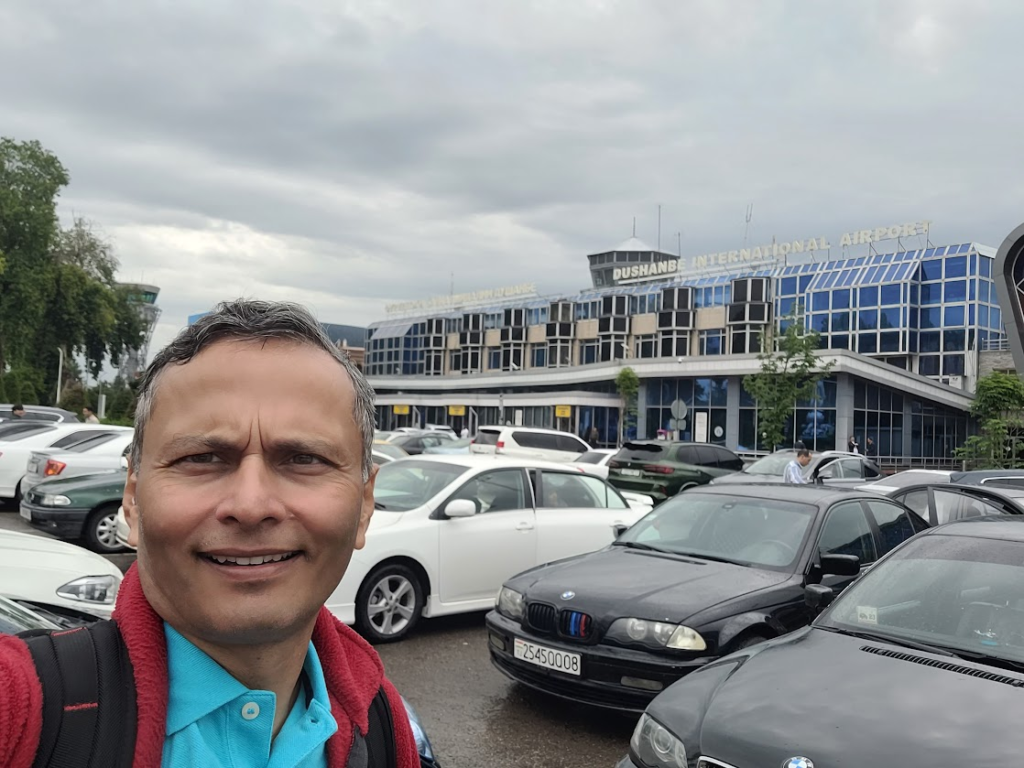
However, after we reached the airport, they said that checkin was not possible due to weather delays. There were only a few clouds in the sky, but somehow all flights were delayed. The flight that was coming from Almaty to take us back was turned back to Almaty. Dushabe airport is not very good. Immigration and customs took too much time. It was very crowded.
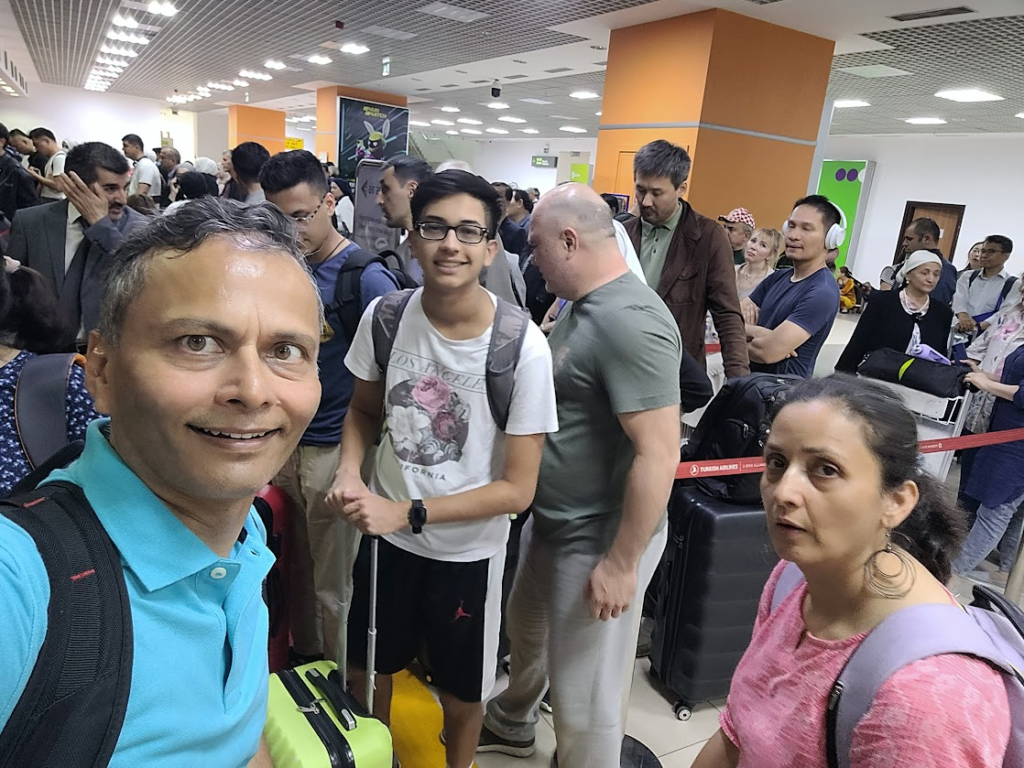
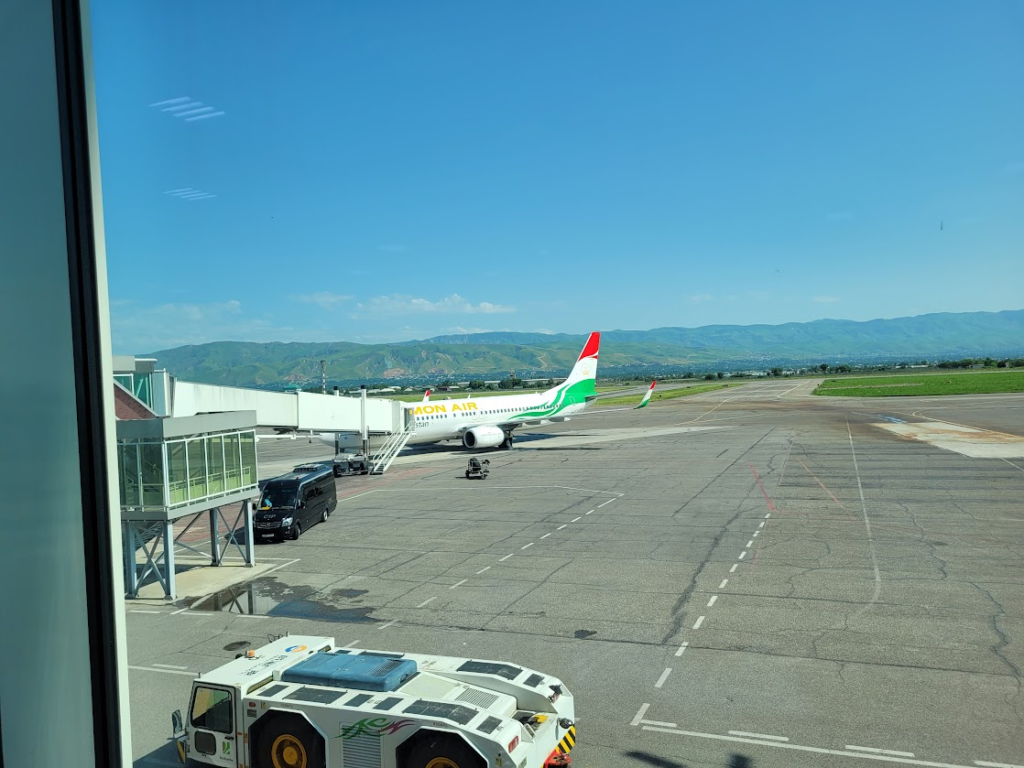
Finally, the the flight took off from Dushanbe at 4.30 pm, about 3 hours late. We reached Almaty at 6.30 pm. Immigration and customs at Almaty airport was smooth and we were out by 7 pm.

This was the end of our short 3 day Tajikistan trip. We were able to cover quite a bit of Tajikistan.
We noticed that in Uzbekistan, there was lot of focus on historical stuff, mosques and madrassas. In contrast, Tajikistan had beautiful green and snow clad mountains, combined with a modern city like Dushanbe. It was a very different experience.
One thing that we could have added to the Tajikistan visit to the Gorno-Badakhshan, an autonomous region in eastern Tajikistan, in the Pamir Mountains. It makes up nearly forty-five percent of the country’s land area but only two percent of its population. This region requies a special permit. A visit there would have taken another 2-3 days
This trip was a part of a larger Central Asia 17 day itinerary which covered Uzbekistan, Tajikistan, Kazakhstan and Kyrgyzstan. Click here if you are interested to read about the entire itinerary.







